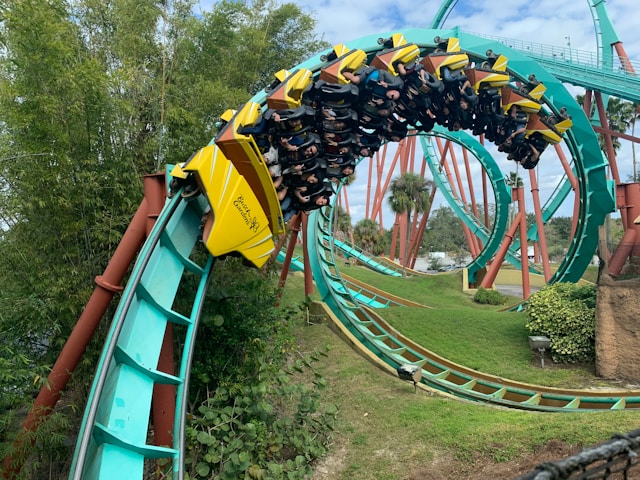How to Learn Vocabulary

Nothing happens without vocabulary. The words you know are the bricks you build your sentences out of: if you don’t have those, nothing gets done. No amount of grammar, or anything else, can compensate for a lack of vocabulary.
Good vocabulary, however, can compensate for a lot. So it’s worth learning how to learn it as fast and efficiently as possible.
Key Takeaways
Vocabulary is hugely important to language learning, and vocabulary specific practice is a great investment of time. There are a lot of words to learn, though, so it’s important to practise vocabulary efficiently.
Spaced repetition is the best learning method we have for learning vocabulary. You want to use a spaced repetition software to manage that for you.
Actively recall the words you review by typing them in or saying them out loud.
Add your own words; don’t download a deck off the internet.
Don’t organise your vocabulary.
Anki is the best. You can read more on how to set it up, how to add words to your Anki, which words are worth your time learning, and how to make the most of your time spent reviewing.
The Magnitude of the Task
To speak any language, you need to know a lot of words.
For everyday English, that’s about 15,000 words. For Icelandic, it’s “only” around 6,000.
6,000 is a lot more doable than 15,000, but it’s still a lot. That means that efficiency matters. It’ll take 16 years if we just do “word of the day” games, so let’s not do that.
Instead, let’s learn vocabulary as efficiently as possible.
Spaced Repetition
The most efficient way to learn vocabulary is to use spaced repetition.
Spaced repetition is simply reviewing words you’ve learned and gradually increasing the space (time span) between each repetition. It’s basically the opposite of cramming for an exam.
When you hear a new word for the first time, you’re nearly guaranteed to forget it in a minute or so. The human brain simply didn’t evolve to infallibly store large amounts of data from a single exposure, like a computer does.
So you review the word in a minute. Then you review it in 10 minutes, then a day later, then 3 days after that, then a week, then 2 weeks, then a month, etc., until the time between reviews is so long it’ll take you a lifetime to forget.
Here’s a chart that summarises this nicely.

The chart mentions “actively retrieve”: we’ll talk about that in a minute.
Spaced Repetition Software
You literally cannot use spaced repetition with a physical medium like flashcards. Remember that there’s a lot of vocabulary: you would need SIX THOUSAND cards, and each word will be on its own unique spacing schedule.
You’d need to buy IKEA’s entire stock of TJOG boxes.

Or you can just use spaced repetition software to sort and organise everything for you.
But Which to Use? (The Answer Is Anki)
Some of the most well-known vocabulary learning apps for Icelandic are Drops, Memrise, Quizlet and Anki.
Quizlet doesn’t offer spaced repetition, so we can cross that off our list immediately.

I’ll tell you up front: Anki is the best, and you should use it. There are some best practices for vocabulary learning that we want to adhere to, and Anki is the only one of the four that lets us do all of them.
Let’s take a look at those best practices.
Active Recall
Active recall is a form of review where you have to… well, actively recall the information. Simply looking at a flashcard and thinking “yeah, I knew that” isn’t very effective.
You should write or at least speak the answer (actively recall the information) before checking if you’re right.
Active recall is extremely effective, and we want to utilise it in our vocabulary learning.
Memrise doesn’t let you choose your input method, meaning you can’t consistently write or speak your answer. We can cross that off our list.

Make Your Own Words
Do not download a deck of words. Add your own, from words you run into when reading and listening to Icelandic. There are two main reasons for this.
Relevance is important. When you download a deck, you often learn random words like “tenderloin” or somesuch. That’s because some butcher made a deck, and that was an important word to him, but you’re not a butcher and the physiology of your food is not that important to you.
When you add your own words, every word is relevant to you.
Context is also huge. With a downloaded deck, you’ll have zero context for the words you learn. Here’s a terrible joke as an example:
- Typpið á mér var í heimsmetabók Guinness, þangað til bókasafnsvörðurinn sagði mér að taka það út = My penis used to be in the Guinness book of world records, until the librarian told me to take it out.
Imagine this is where you first encounter the word bókasafnsvörður (librarian), and you add it to your Anki. From now on, every time you review the word, you’re going to connect it to this stupid joke and remember how appalled you are right now.
If the word bókasafnsvörður just appeared among hundreds of others in a deck you downloaded, your only memory of the word would be from the reviewing process. You learn faster with context.
Do Not Sort Your Vocabulary
When you learn vocabulary by thematic grouping (like in nearly every textbook and class ever, unfortunately), you are more likely to run into semantic interference.
Semantic interference is where you mix up words because they have a similar meaning - they interfere with each other because of their similar semantics (semantics is linguistics jargon for meaning).
If you learn many words with similar meaning at the same time (maybe you had a lesson on the colours, or travel words, or things you find in the kitchen), your brain is more likely to mix them up.
For instance, say you learned the tools. Your brain is great at going, “Ah, skrúfjárn! That’s a tool! I know that because I learned it when I was learning all the tools! … Bugger me if I remember which tool it is, though.”
You want all your vocabulary to be in one great, heaping, messy, glorious pile. That way, you avoid semantic interference.
Drops doesn’t allow you to add your own words, and it also presents the words it gives you in thematic groups. Drop it like it’s hot (I couldn’t resist, sorry).

Next Steps
Now that you know vocabulary learning best practices, the next step is to download and set up your Anki!
Related reading
If you found this interesting, you might also be interested in these articles.




